Cycling Ride

How can I discover new cycling routes in my area ?
Finding new cycling routes can be an exciting adventure. Here are several ways to discover new cycling routes in your area: 1. Use cycling apps and websites like Strava, Komoot, Ride with GPS, and Bikemap. 2. Join local cycling groups through Meetup, cycling clubs, or Facebook groups. 3. Check with local bike shops for route recommendations and group rides. 4. Look at city or county parks departments for maps and events showcasing new routes. 5. Ask friends and family for hidden gem routes and join their rides. 6. Explore on your own by scouting detours on familiar rides and using maps. 7. Attend cycling events like road races and bike festivals to learn about new routes. 8. Use Google Maps to plan custom routes and spot potential paths in satellite view. 9. Check out local guidebooks on cycling in your region at bookstores or the library. 10. Visit local tourist information centers for brochures and advice on scenic routes. By utilizing these methods, you can expand your cycling horizons and enjoy the thrill of discovering new routes in your area while riding safely and respecting the rules of the road and trail.

What kind of cycling gear do I need for road biking ?
Road biking requires specific gear for safety, comfort, and efficiency. Essential items include a well-fitted helmet and road bike, moisture-wicking clothing, protective accessories like sunglasses and gloves, hydration options, tools for repairs, first aid supplies, safety items such as reflective gear and lights, performance enhancers including clipless pedals and cycling computers, storage solutions for longer rides or tours, and maintenance tools to keep the bike in top condition.

What are some must-ride long-distance cycling paths ?
Long-distance cycling paths offer a unique way to explore the world's diverse landscapes and cultures. From coastal drives to mountainous trails, these routes cater to various preferences and skill levels. By embarking on these must-ride paths, cyclists can immerse themselves in breathtaking scenery, cultural experiences, and personal challenges that will leave lasting memories.
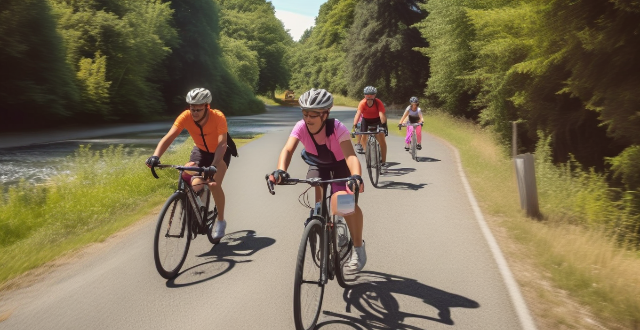
How do I find cycling routes that avoid traffic ?
Cycling is a great way to exercise and explore, but sharing the road with vehicles can be dangerous. To ensure a safe ride, it's important to find cycling routes that avoid traffic. Some tips include using online mapping tools like Google Maps or Strava, checking with local cycling groups, looking for dedicated bike infrastructure, and planning your route ahead of time. By following these steps, you can enjoy a safe and enjoyable ride without worrying about traffic.

What safety precautions should I take when cycling on urban routes ?
Cycling in urban areas can be a fun and efficient way to get around, but it's important to prioritize safety. Here are some key precautions to take when cycling on urban routes: 1. Wear a Helmet 2. Use Proper Lighting 3. Follow Traffic Laws 4. Be Predictable 5. Stay Alert 6. Choose the Right Route 7. Wear Reflective Clothing 8. Keep Your Bike Maintained

Are there any apps that suggest cycling routes based on my fitness level ?
The text discusses the topic of cycling apps that suggest routes based on fitness level. It introduces the concept and then lists five top apps for this purpose: Strava, MapMyRide, Komoot, Cyclemeter, and Ride with GPS. Each app is briefly described in terms of its features and how it suggests suitable routes. The conclusion summarizes the benefits of these apps for cyclists of all levels.

Where can I find a map of local cycling routes ?
Cycling is an excellent way to explore your local area, stay fit, and enjoy the outdoors. If you're looking for maps of cycling routes near you, here are some resources that can help: City or Local Government Websites Cycling Clubs or Groups Online Cycling Communities Local Bike Shops Tourism Information Centers Smartphone Apps Google Maps Social Media Library or Bookstore Outdoor Recreational Maps Word of Mouth Remember to always check the condition of the route before heading out, as well as the weather forecast and any potential hazards along the way. Happy cycling!
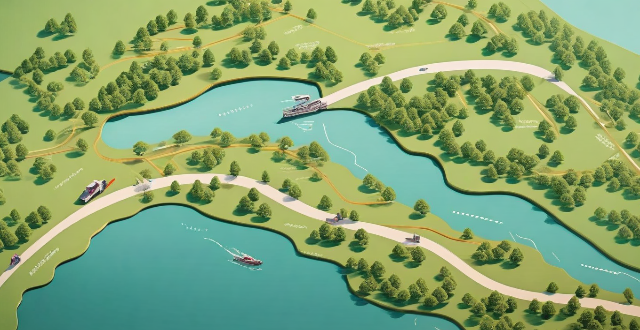
How do I plan a cross-country cycling route ?
Planning a cross-country cycling route involves determining the starting and ending points, choosing a suitable route, planning daily mileage, booking accommodations/campsites, and packing necessary gear. Factors to consider include distance, terrain, weather conditions, safety concerns, travel restrictions, fitness level, budget, and preferences. Tools like Google Maps, Bikely, or Komoot can help customize the route based on distance, elevation gain, and surface type. Aim for 50-70 miles per day if experienced or 30-40 miles if new to long-distance cycling. Pack spare tubes, pump, multi-tool, first aid kit, food, water, and appropriate clothing for expected weather conditions.

Are there any events or clubs that organize group cycling trips on specific routes ?
There are many events and clubs that organize group cycling trips on specific routes, providing opportunities for cyclists to explore new places, meet other riders, and enjoy shared experiences. Examples include the Gran Fondo World Championships, Tour de Cure, RAAM, local cycling clubs, bike shops, and online communities like Strava, Facebook, and Meetup. These organizations offer a range of rides and races, from beginner to advanced levels, and cater to different interests such as road biking, mountain biking, and fundraising.

Is it safe for women to use ride-sharing services like Uber when traveling ?
Ride-sharing services like Uber have become increasingly popular among travelers due to their convenience and affordability. However, safety concerns have been raised, especially for women who may be more vulnerable to certain risks. In this response, we will explore the safety aspects of using ride-sharing services for female travelers. Ride-sharing services like Uber have implemented several safety features to ensure the well-being of their passengers. These include driver screening, GPS tracking, in-app communication, and emergency assistance. Women can further mitigate potential risks by verifying the driver's identity, sharing trip details, choosing well-lit areas, and staying alert during the ride. Overall, ride-sharing services like Uber can be safe for women when traveling, provided that they exercise caution and utilize the safety features offered by these platforms. By following best practices such as verifying driver identity, sharing trip details, choosing well-lit areas, and staying alert during the ride, women can significantly reduce potential risks associated with using ride-sharing services. It is also essential to report any safety concerns to the appropriate authorities and the ride-sharing company to help improve overall safety standards for all users.
![What are the best cycling routes in [city/region] ?](/imgs/2f8b31ee-f62a-46e3-8828-37a4af062f9b.png)
What are the best cycling routes in [city/region] ?
Cycling is a great way to explore the beautiful landscapes and attractions of [city/region]. Here are some of the best cycling routes that you can take: 1. Coastal Route: Start at [location] and end at [location]. Distance: [distance]. Difficulty level: [level]. Scenic spots: [spots]. 2. Countryside Route: Start at [location] and end at [location]. Distance: [distance]. Difficulty level: [level]. Scenic spots: [spots]. 3. Mountainous Route: Start at [location] and end at [location]. Distance: [distance]. Difficulty level: [level]. Scenic spots: [spots]. 4. Urban Route: Start at [location] and end at [location]. Distance: [distance]. Difficulty level: [level]. Scenic spots: [spots]. Remember to bring essential items such as water, snacks, a map, and a first aid kit. Wear appropriate clothing and gear, and always follow traffic rules and regulations.
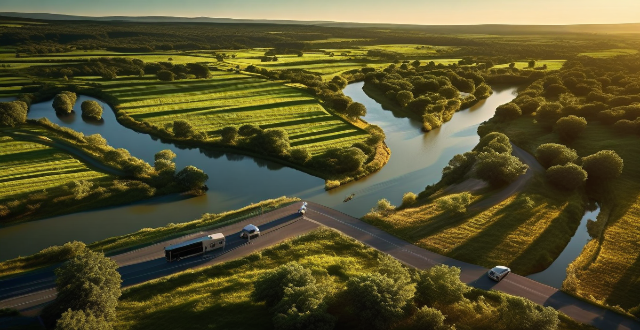
What are the benefits of using a GPS device for cycling routes ?
Using a GPS device for cycling routes offers benefits such as improved navigation, safety and security, performance tracking, and convenience. It provides accurate directions, real-time tracking, and the ability to save points of interest. Safety features include emergency alerts, night riding capabilities, and weather updates. Performance tracking measures speed, distance, elevation gain, and heart rate. Convenience is enhanced with no need for paper maps and automatic routing. Overall, using a GPS device can greatly enhance the cycling experience.

What is the impact of ride-sharing services on urban transportation ?
Ride-sharing services have had a significant impact on urban transportation, including increased convenience and accessibility for residents, decreased use of personal cars leading to less traffic congestion and air pollution, negative effects on public transit systems due to declining ridership, contributing to increased traffic congestion due to deadheading and detours by drivers, and complex environmental impacts. Policymakers must consider the role of ride-sharing services in shaping urban transportation systems.

What is the future of public transportation, considering the rise of autonomous vehicles and ride-sharing services ?
The future of public transportation is likely to be shaped by autonomous vehicles and ride-sharing services. Autonomous vehicles offer safety, efficiency, and convenience benefits over traditional public transportation systems, while ride-sharing services provide accessibility, cost savings, and reduced environmental impact. However, challenges must be addressed before these technologies can fully replace traditional public transportation systems. Cities and transportation providers must carefully consider how best to integrate these new technologies into their existing infrastructure while ensuring that everyone has access to safe and reliable transportation options.

Can you recommend a scenic bike path for beginners ?
Cycling is a great way to stay active while exploring nature. Here are some recommendations for scenic bike paths suitable for beginners: 1. Flat and Paved Trails: The Great Allegheny Passage in Pennsylvania offers a smooth surface with lush forests and rolling hills; Lake Tahoe Bike Path in California & Nevada circles around Lake Tahoe with breathtaking views; The Rail Trail in Victoria, Australia follows an old railway line with diverse scenery. 2. Natural and Dirt Trails: Captain Lawrence Gilroy Nature Trail in Ontario, Canada takes you through a beautiful forest setting; Maah Daah Hey Trail in North Dakota offers a mix of terrains with stunning views of the Badlands; Chautauqua Park Trail in Boulder, Colorado winds through the foothills of the Rocky Mountains with both paved and natural surfaces. Tips for beginner cyclists include starting slow, choosing the right gear, staying hydrated and fueled, being aware of surroundings, and having fun.
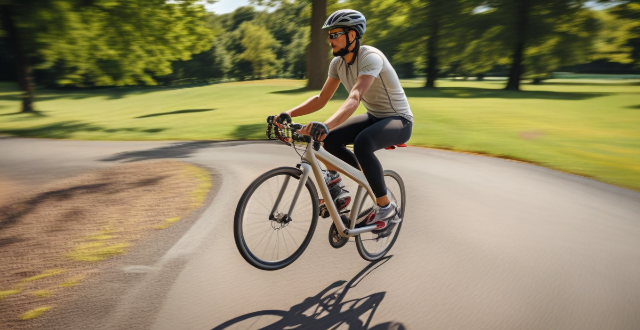
How do I prepare for a long-distance cycling trip ?
Preparing for a long-distance cycling trip involves careful planning, physical training, and packing essential gear. Start by researching your route's terrain and weather conditions, then build up your endurance with training rides and strength exercises. Ensure your bike is well-maintained and equipped with necessary tools and bags. Pack smart with suitable clothing, navigation tools, and a first aid kit. Plan for nutrition and hydration needs, prioritize safety with visibility and communication measures, and learn basic bike repairs. Consider legal and ethical aspects like traffic laws and environmental respect. Prepare mentally for the journey's challenges and establish support systems. Finally, have contingency plans in place for unexpected weather or route changes.
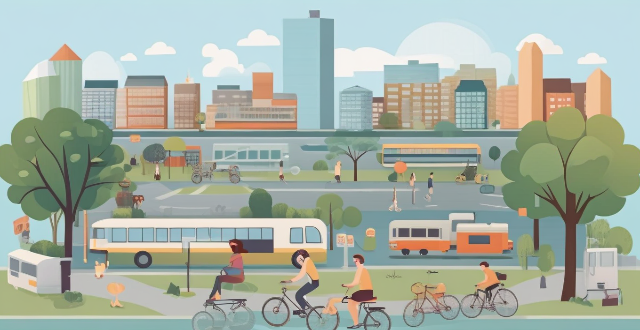
What are the best ways to get around a new city on a weekend trip ?
When planning a weekend trip to a new city, it's important to consider the best ways to get around. Public transportation is often the most cost-effective option and offers easy-to-use maps and schedules. Taxis and ride-sharing services offer more flexibility but are generally more expensive than public transportation. Renting a bicycle is a fun and eco-friendly way to explore a new city, while walking allows you to discover hidden gems along the way at no cost. Car rentals offer unparalleled flexibility and comfort but are generally more expensive than other modes of transportation. By considering factors such as cost, convenience, flexibility, and adventure, you can choose the best mode of transportation for your needs and preferences.

Is there a website where cyclists share their favorite routes ?
Several websites allow cyclists to share their favorite routes, including Strava, MapMyRide, Ride with GPS, and Komoot. These sites offer route planning, tracking, and analysis tools, as well as community features for connecting with other cyclists. They also provide valuable information such as distance, elevation gain, and estimated time to complete the route, along with user ratings and reviews.

Can ecological protection areas help mitigate the impacts of climate change ?
Ecological protection areas can mitigate climate change impacts by carbon sequestration, habitat preservation, water conservation, soil erosion control, and nutrient cycling. These areas safeguard biodiversity, protect natural resources, and preserve ecosystem functions. They help reduce atmospheric CO2 levels, provide refuge for species adapting to changing environmental conditions, maintain stable water levels, filter pollutants from water sources, control soil erosion, and promote nutrient cycling processes. Supporting and expanding ecological protection areas is crucial for a sustainable future.
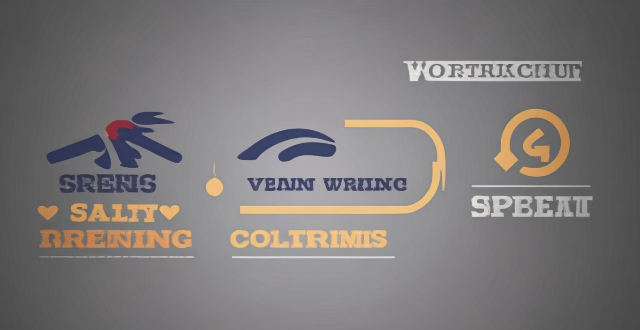
Can you suggest some effective workout splits for different sports ?
Effective workout splits vary based on the specific goals and sports. For strength training, a weekly routine includes different muscle group workouts with rest or cardio days. Endurance training focuses on running, swimming, cycling, with rest or yoga days. Flexibility & mobility require daily morning and evening practices. Sports-specific training is tailored to the demands of the sport, such as basketball drills and game simulations. Incorporate warm-up, cool-down, and adjust intensity to avoid injuries and overtraining.

What are some examples of aerobic exercises ?
Aerobic exercises are physical activities that increase heart rate and breathing to deliver more oxygen to muscles, improving cardiovascular health, burning calories, and reducing chronic disease risk. Examples include using cardiovascular machines like treadmills and elliptical trainers, outdoor activities such as running and cycling, group fitness classes including aerobic dance and spinning, sports like basketball and tennis, and low-impact options like brisk walking and water aerobics. Benefits encompass improved heart health, weight management, increased stamina, mental health enhancement, and immunity boost. Safety precautions include consulting a healthcare professional, proper warm-up and cool-down, staying hydrated, and listening to your body to avoid overexertion.

What are some good cardio exercises that I can do at home ?
This text provides a summary of good cardio exercises that can be done at home, including jumping jacks, high knees, burpees, mountain climbers, jump rope, squat jumps, dancing, stair running or climbing, cycling, and fast walking or jogging in place. Each exercise is described briefly, along with its benefits for cardiovascular health, muscle engagement, and overall fitness. The text emphasizes the importance of starting slow and gradually increasing intensity and duration, as well as consulting with a healthcare professional before starting any new exercise regimen.

How will transportation systems evolve in future cities ?
The future of transportation systems in cities will be characterized by smart mobility, sustainable transportation, and integrated transportation systems. Smart mobility involves the use of technology to optimize the movement of people and goods within cities, while sustainable transportation focuses on reducing the environmental impact of transportation by promoting walking, cycling, and public transport over private cars. Integrated transportation systems combine different modes of transport into a seamless network that makes it easy for people to get around cities. These trends will make it easier for people to get around cities while reducing the environmental impact of transportation.
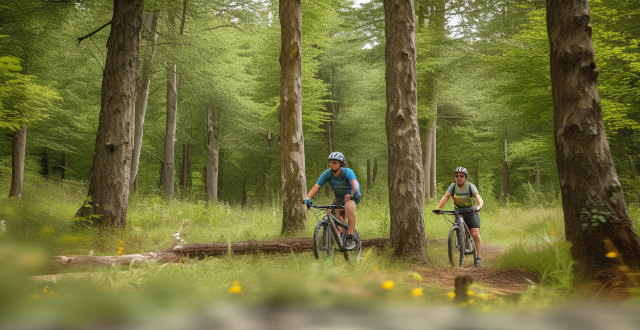
Can you suggest any outdoor adventures for parents and kids to enjoy together ?
The article provides a list of outdoor activities for families to enjoy together, such as hiking, camping, water sports, cycling, wildlife watching, rock climbing, adventure parks, beach days, and gardening. The goal is to choose activities that everyone can participate in safely and have fun. It's important to be prepared with appropriate gear, clothing, and snacks to ensure a pleasant outdoor experience.

What are the best workout routines for people with desk jobs ?
Incorporating regular exercise into your routine is essential for counteracting the negative effects of having a desk job, such as back pain, weight gain, and reduced cardiovascular fitness. The best workout routines for people with desk jobs include cardiovascular exercises like walking or jogging, cycling, and swimming; strength training exercises such as bodyweight exercises, resistance bands, and dumbbells or kettlebells; and stretching and mobility exercises like yoga or Pilates, foam rolling, and dynamic stretching. By making exercise a part of your routine, you'll not only counteract the negative effects of sitting but also boost your energy levels and productivity throughout the day.

How do public health policies influence the design and accessibility of parks and recreational facilities ?
Public health policies significantly influence the design and accessibility of parks, aiming to promote physical activity, reduce sedentary behavior, and improve overall health outcomes. Key strategies include promoting walking paths, cycling lanes, fitness equipment, sports facilities, natural landscapes, outdoor seating, interactive features, stress reduction, social interaction, environmental benefits, accessible pathways, ramps, braille signage, and inclusive play areas. These policies contribute to creating parks that support the well-being of individuals and communities alike.

Can technology help in making tourism more environmentally friendly and resilient to climate change ?
Tourism, a significant contributor to the global economy, has negative impacts on the environment and contributes to climate change. Technology can play a crucial role in making tourism more environmentally friendly and resilient to climate change by implementing sustainable transportation options, energy-efficient technologies, sustainable tourism practices, climate change adaptation strategies, and mitigation efforts.
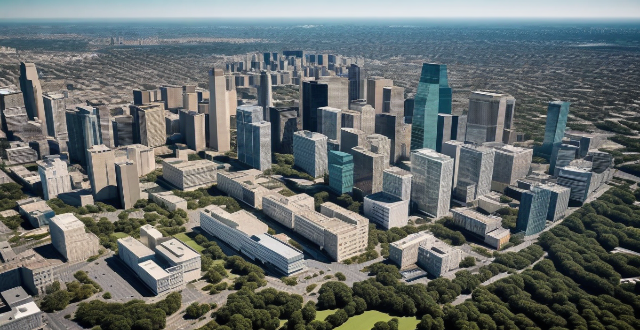
How can circular economy policies be integrated into urban planning ?
Integrating circular economy policies into urban planning is crucial for creating sustainable cities. To achieve this, cities can promote sustainable transportation, reduce waste and resource consumption, support local food production, promote green building design, and foster collaboration between stakeholders. By implementing these measures, cities can create a more sustainable environment for their residents while also reducing their impact on the planet.

How can I find affordable transportation options during my travels ?
Finding affordable transportation options during your travels can be a challenge, but it's not impossible. Here are some tips to help you find the best deals and save money on transportation: 1. Research Before You Go 2. Use Public Transportation 3. Consider Carpooling 4. Walk or Bike 5. Take Advantage of Discounts 6. Book in Advance 7. Use Ride-Share Services Wisely 8. Stay Central
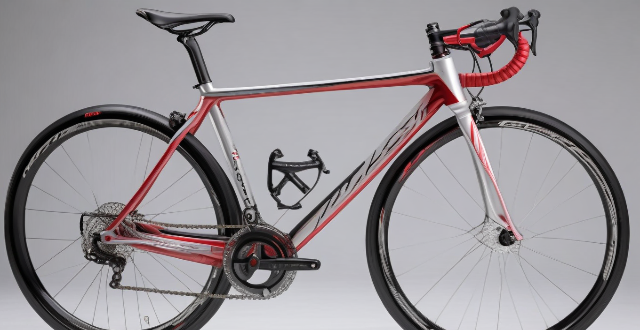
Can hub motors be used in bicycles ?
Hub motors, built into the wheel's hub, are compact and lightweight, making them suitable for bicycles. They offer easy installation, quiet operation, and low maintenance but may have limited power output and reduced range. Hub motors are designed for specific wheel sizes and can be more expensive than other electric motors. Despite some disadvantages, they are a popular choice for DIY e-bike projects and those seeking electric power assistance without sacrificing performance or handling characteristics.